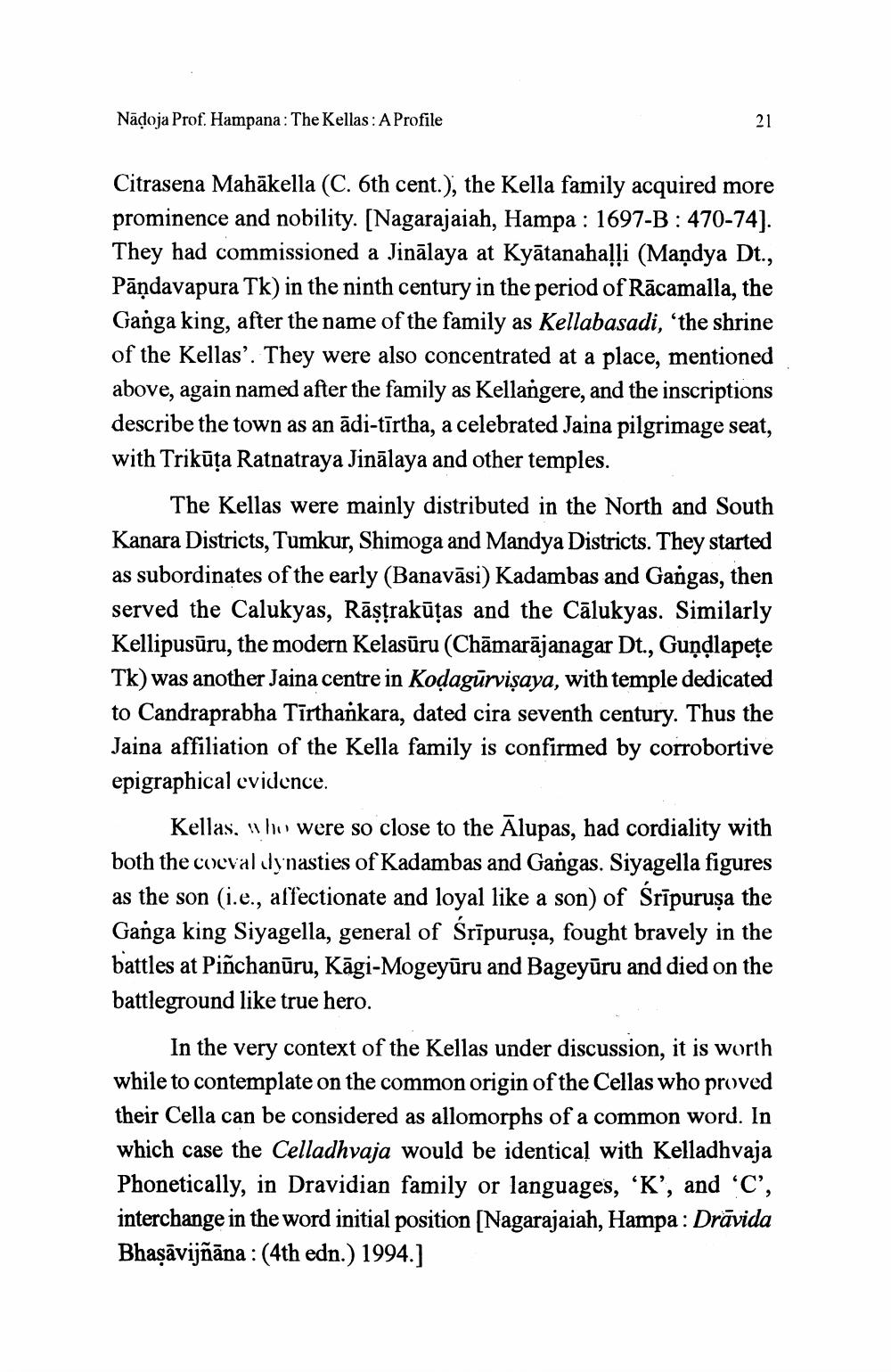________________
Nādoja Prof. Hampana: The Kellas: A Profile
Citrasena Mahākella (C. 6th cent.), the Kella family acquired more prominence and nobility. [Nagarajaiah, Hampa : 1697-B : 470-74). They had commissioned a Jinālaya at Kyātanahaļļi (Maņdya Dt., Pāņdavapura Tk) in the ninth century in the period of Rācamalla, the Ganga king, after the name of the family as Kellabasadi, 'the shrine of the Kellas'. They were also concentrated at a place, mentioned above, again named after the family as Kellangere, and the inscriptions describe the town as an ādi-tīrtha, a celebrated Jaina pilgrimage seat, with Trikūța Ratnatraya Jinālaya and other temples.
The Kellas were mainly distributed in the North and South Kanara Districts, Tumkur, Shimoga and Mandya Districts. They started as subordinates of the early (Banavāsi) Kadambas and Gangas, then served the Calukyas, Rāştrakūțas and the Cālukyas. Similarly Kellipusūru, the modern Kelasūru (Chāmarājanagar Dt., Gundlapete Tk) was another Jaina centre in Kodagūrvişaya, with temple dedicated to Candraprabha Tīrthankara, dated cira seventh century. Thus the Jaina affiliation of the Kella family is confirmed by corrobortive epigraphical evidence.
Kellas, who were so close to the Ālupas, had cordiality with both the coeval dynasties of Kadambas and Gangas. Siyagella figures as the son (i.e., affectionate and loyal like a son) of Śrīpuruşa the Ganga king Siyagella, general of Srīpurușa, fought bravely in the battles at Piñchanūru, Kāgi-Mogeyūru and Bageyūru and died on the battleground like true hero.
In the very context of the Kellas under discussion, it is worth while to contemplate on the common origin of the Cellas who proved their Cella can be considered as allomorphs of a common word. In which case the Celladhvaja would be identical with Kelladhvaja Phonetically, in Dravidian family or languages, 'K', and 'C', interchange in the word initial position [Nagarajaiah, Hampa : Drāvida Bhaşāvijñāna : (4th edn.) 1994.]




